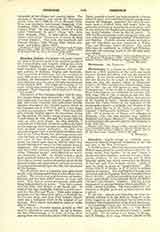

Chersonesus, (I) a titular see of Crete. The city stood on a little peninsula of the northeast coast, between Cnossus and Olous, and was the seaport of Lyttos. In the fourth century B.C. it struck coins, and was known for its temple of Britomartis. Its ruins are near the modern village of Khersonisi. Lequien (II, 269) mentions four Greek bishops, from 441 to 789; the see still figures in later “Notitiae Episcopatuum” of the twelfth or thirteenth century. Seven Latin bishops are mentioned by Lequien (III, 915), from 1298 to 1549, of whom the last two, Dionysius and Joannes Franciscus Verdura, were present at the Council of Trent. Another bishop of Chersonesus was Pietro Coletti, at the beginning of the seventeenth century—a Catholic, but whether of his native Greek Rite or of the Latin is unknown (E. Legrand, “Bibliographie hellenique, 17e siecle”, III, 143).—(2) A titular see of Thrace, and suffragan to Heracleia. The city was situated near Callipolis (Gallipoli) and Agora, (Malgara?). One Greek bishop is mentioned in 449 and one Latin in 1527 (Lequien, I, 1128; III, 973).
S. PETRIDES

